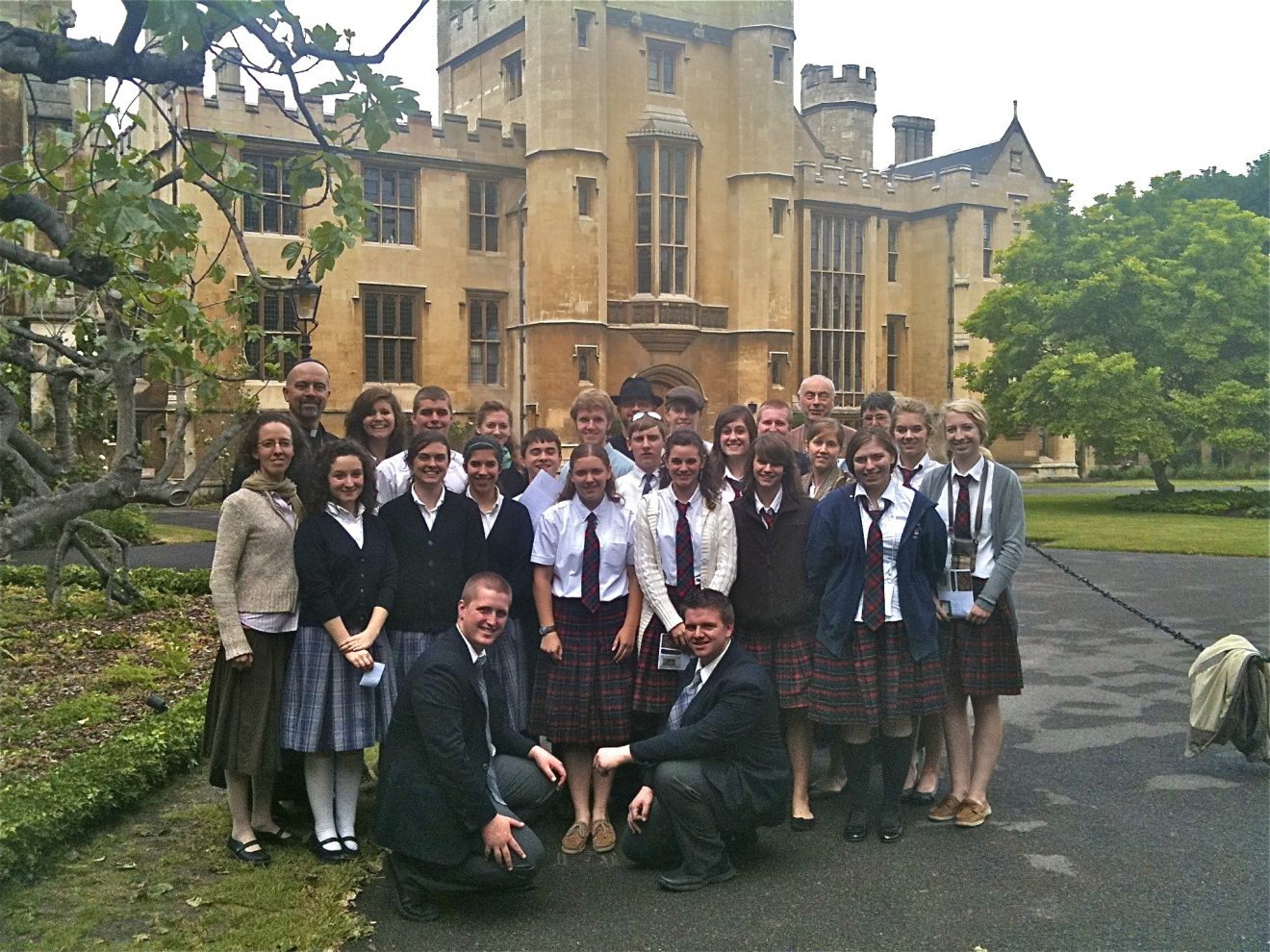Academy England Trip, 2010
ST. ANDREW'S ACADEMY TRAVEL STORIES
St. Andrew's Academy Students Explore British Culture
By Allison Steinberg,
Professor of History & Classical Languages
 St. Andrew’s Academy students discovered first hand early this summer that three concrete tokens of British culture, taken together, serve as metaphors for British culture as a whole. They are the British tea, the London Underground, and Canterbury Cathedral. All together, these things show how remarkable the small island of England is.
St. Andrew’s Academy students discovered first hand early this summer that three concrete tokens of British culture, taken together, serve as metaphors for British culture as a whole. They are the British tea, the London Underground, and Canterbury Cathedral. All together, these things show how remarkable the small island of England is.
First, as a fellow traveler who had lived in Britain for a year noticed, somehow the English have managed to build this grand civilization, with cathedrals and universities and highways and indoor plumbing, yet they take breaks for tea at any time of day! How have they built a culture amid so many breaks? That I can’t completely answer, but I think British tea is at the heart of it. A nation who has made tea, humble tea, into its own event, has hit on something. Comfort in simple things, a time for refreshment right on schedule, no need for rush. A cathedral takes centuries to build, but it will get finished, and it will be finished by those who have had their tea.
Ely Cathedral was one of these cathedrals which we visited. Founded in the late 600s by St. Etheldreda, it is a magnificent Norman-style structure, with thick, heavy pillars and an octagonal tower. Many ask why such a magnificent cathedral was built in a small town such as Ely, and the answer is that the cathedral was there first, and the town grew up around it. In fact, because in England the status of city is dependent upon a cathedral, Ely is only technically a city because of the cathedral; it is the third smallest city in England. The cathedral began as a Benedictine monastery within a small settlement, and was rebuilt after the Norman conquest of England.
Amid the apparently leisurely pace of the country, which allows for building of cathedrals over many centuries, one might think the rail system would operate on a more southern-European style of time, in which trains run late or simply never arrive, with no particular reason or explanation; or where you wait for bus 34 for hours to no avail. Not so the London Underground. We never waited more than a few minutes for a ride! It is on time with the same detached, methodical, civil manner as the English who ride it, urging you politely to “Mind the gap,” on time without insisting, in the manner of other European nations, that the entire world must run on time, or all will be lost. No, if the trains run on time, this is enough. The English seemed to me punctual without being tyrannical, accommodating without being careless, and courteous without being familiar.
Finally, the English dwell among ancient and magnificent monuments, and they dwell among them with that same civility and affection and ease with which they regard tea and trains. Young people lounge in the mild English sun on the lawn in front of Durham Cathedral, comfortable beneath its gaze. “It is rather nice, isn’t it?” one might nod toward the stone edifice. They take a similar attitude toward the 1900-year-old wall built by a Roman emperor, which runs from coast to coast in the North of the country. Our students enjoyed the experience of Roman stone beneath their feet when we walked Hadrian’s wall one day.
Canterbury Cathedral is one of the oldest churches in England, originally founded in 602. It has a fascinating history, and many famous men have been archbishop there. Our students have read about St. Thomas Becket, the famous saint associated with Canterbury, and many pilgrims traveled to Canterbury over the years to visit his shrine. Chaucer’s Canterbury Tales, which our high school students will read this fall, is all about a fictitious group of these pilgrims.
Other highlights on the trip included a rather bloody staging of Macbeth in the Globe Theatre, where the students got to experience “groundling” status in the traditional way of standing for the whole performance; singing a service in Escombe Church, dating from the 7th century; and praying the Lord’s Prayer in the ruins of a temple of Mithras. The choir sang for BBC radio, Lancashire, as well as multiple services and a few concerts around the small island. And yes, the students played with the lions of Trafalgar Square in London!
The travelers of St. Andrew’s are very thankful to many local donors who, in so many ways, made the wonderfully memorable trip possible.
Below, the staff’s favorite picture; Carinne Cook and Peter Bartel in London–perhaps this best explains the England 2010 Trip!!!
